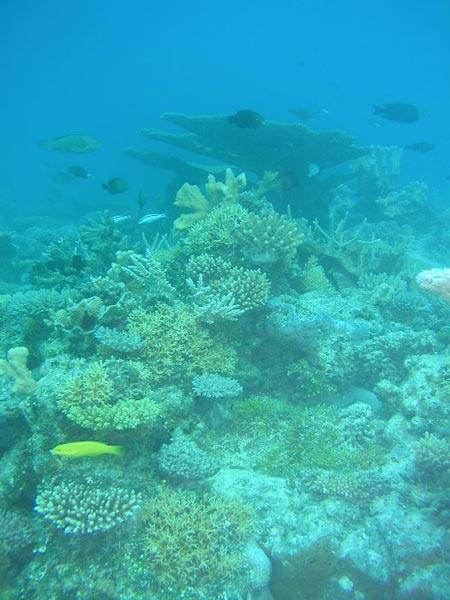Bikini Atoll Corals Recovering from Atomic Blast

Fifty years after the atomic blast that devastated the Bikini Atoll, vast expanses of corals in the area seem to be flourishing once again, much to the surprise of scientists. American government scientists detonated a hydrogen bomb on the tiny island (a part of the Marshall Islands in the western Pacific) on March 1, 1954. Many of the natives were moved to Kili Island and today are compensated by the United States government. Code-named Castle Bravo, the nuclear bomb was the most powerful ever exploded at the time, at 15 megatons, making it 1,000 times more powerful than the bomb dropped on Hiroshima in World War II. The massive explosion vaporized everything on three islands, raised water temperatures to 55,000 degrees and left a crater that was 1.2 miles (2 kilometers) wide and 240 feet (73 meters) deep. A team of scientists recently led a diving expedition into Bravo Crater and found an unexpectedly thriving coral community. "I didn't know what to expect — some kind of moonscape perhaps. But it was incredible, huge matrices of branching Porites coral (up to 8 meters [25 feet] high) had established, creating a thriving coral reef habitat," said study team member Zoe Richards of the Australian Research Council Centre of Excellence for Coral Reef Studies and James Cook University. "Throughout other parts of the lagoon it was awesome to see coral cover as high as 80 percent and large tree-like branching coral formations with trunks 30 centimeters [12 inches] thick." A nearby atoll is likely seeding the coral recovery, the scientists think, and because the island is rarely visited, the coral is left to recover. Richards said that the healthy condition of the Bikini corals was a sign of the resilience of corals after a major disturbance, if left undisturbed to recuperate. The news wasn't all good however, as there was a disturbingly high level of loss of coral species from around the atoll. Forty-two species of corals are missing compared to a study made in the 1950s before the atomic tests were carried out. Though ambient radiation readings are fairly low at Bikini, radioactive material accumulates in the soil and in produce such as coconuts, making them unsafe to eat. It is unlikely that the Bikini natives will be able to return to the atoll in the near future, the scientists said.
- Top 10 Ways to Destroy Earth
- Herpes Virus Killing Coral Reefs
- Images: Incredible Coral
Get the world’s most fascinating discoveries delivered straight to your inbox.

Andrea Thompson is an associate editor at Scientific American, where she covers sustainability, energy and the environment. Prior to that, she was a senior writer covering climate science at Climate Central and a reporter and editor at Live Science, where she primarily covered Earth science and the environment. She holds a graduate degree in science health and environmental reporting from New York University, as well as a bachelor of science and and masters of science in atmospheric chemistry from the Georgia Institute of Technology.


